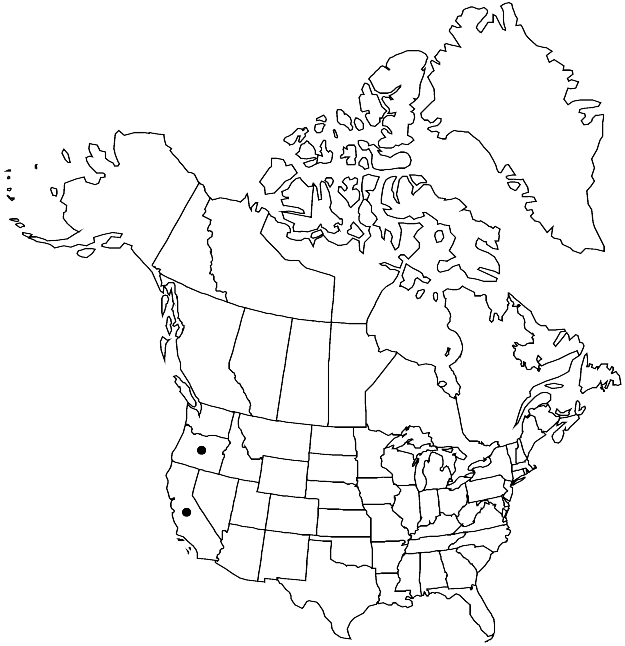Difference between revisions of "Brachythecium bolanderi"
Ber. Thätigk. St. Gallischen Naturwiss. Ges. 1876 – 1877: 324. 1878.
FNA>Volume Importer |
imported>Volume Importer |
||
| (3 intermediate revisions by 2 users not shown) | |||
| Line 14: | Line 14: | ||
|name=Hypnum bolanderi | |name=Hypnum bolanderi | ||
|authority=Lesquereux | |authority=Lesquereux | ||
| + | |rank=species | ||
|publication_title=Trans. Amer. Philos. Soc., n. s. | |publication_title=Trans. Amer. Philos. Soc., n. s. | ||
|publication_place=13: 12. 1865 | |publication_place=13: 12. 1865 | ||
| Line 20: | Line 21: | ||
|name=Bryhnia bolanderi | |name=Bryhnia bolanderi | ||
|authority=(Lesquereux) Brotherus | |authority=(Lesquereux) Brotherus | ||
| + | |rank=species | ||
}} | }} | ||
|hierarchy=Brachytheciaceae;Brachythecium;Brachythecium bolanderi | |hierarchy=Brachytheciaceae;Brachythecium;Brachythecium bolanderi | ||
| Line 43: | Line 45: | ||
-->{{#Taxon: | -->{{#Taxon: | ||
name=Brachythecium bolanderi | name=Brachythecium bolanderi | ||
| − | |||
|authority=(Lesquereux) A. Jaeger | |authority=(Lesquereux) A. Jaeger | ||
|rank=species | |rank=species | ||
| Line 57: | Line 58: | ||
|publication year=1878 | |publication year=1878 | ||
|special status=Endemic | |special status=Endemic | ||
| − | |source xml=https:// | + | |source xml=https://bitbucket.org/aafc-mbb/fna-data-curation/src/2e0870ddd59836b60bcf96646a41e87ea5a5943a/coarse_grained_fna_xml/V28/V28_643.xml |
|genus=Brachythecium | |genus=Brachythecium | ||
|species=Brachythecium bolanderi | |species=Brachythecium bolanderi | ||
Latest revision as of 21:37, 5 November 2020
Plants small, in loose to moderately dense mats, yellow-green to brownish or dark green. Stems to 4 cm, creeping, terete-foliate, irregularly pinnate, branches to 5 mm, straight, terete-foliate. Stem leaves erect-spreading, loosely imbricate to distant, ovate to ovate-lanceolate, broadest at 1/10–1/6 leaf length, slightly concave, not or slightly plicate, 0.6–1.4 × 0.4–0.6 mm; base rounded, narrowly short-decurrent; margins plane or rarely recurved in places, serrulate throughout; apex gradually tapered or short-acuminate; costa to 60–75% leaf length, strong, terminal spine present; alar cells quadrate to short-rectangular, same size as or smaller than adjacent basal cells, 10–15 × 10–12 µm, walls moderately thick, region inconspicuous, of 2–5 × 2–4 cells; laminal cells linear, 25–60 × 5–8 µm; basal cells weakly differentiated, inconspicuous, 25–40 × 9–12 µm, region in 1 or 2 rows. Branch leaves more elliptic, 0.7–0.8 × 0.2–0.4 mm; costal terminal spine with several distal teeth. Sexual condition dioicous. Seta red-brown, 1–2.5 cm, rough. Capsule horizontal, red-brown, ovate-ventricose, curved, 1–1.6 mm; annulus separating by fragments; operculum long-conic. Spores 9–12 µm.
Habitat: Soil
Elevation: moderate elevations (400-1500 m)
Discussion
Brachythecium bolanderi occurs mainly in California; E. Lawton (1971) reported it from Oregon. Superficially, B. bolanderi resembles small and short-leaved phenotypes of Brachytheciastrum velutinum and Brachytheciastrum fendleri; it differs from the former in its shorter leaves and shorter cells (6–8:1 versus 8–12:1), and from the latter in having erect-spreading and loosely imbricate to distantly arranged leaves rather than erect-appressed and closely imbricate leaves. Small plants of Oxyrrhynchium hians may also be similar, but the branch leaves of O. hians are broader.
Selected References
None.
